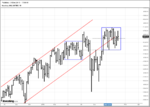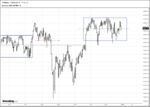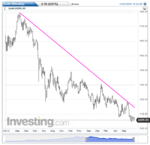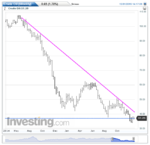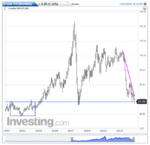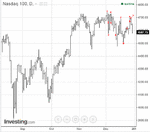This morning I was looking for a bounce off or breakdown through either the daily or weekly medians, which on my charts were within 20 pts of each other. Once price broke through the daily median, I started looking for a selling climax as laid out in DB's post #340 and in the book. It seems to have worked (even in real time). If I've done this correctly, maybe next time I will actually take the trade.
DB has been using 4990-4500 as a median recently, so I used that level as the bottom for my daily chart range.
Not sure what you mean by your last sentence. I haven't been focused on a daily range at all but rather the hinge that was formed last week (post 364). The dynamics are different, thus what one looks for and waits for in terms of a trading opportunity is different. Then of course there's bar interval. If you're trading daily/hourly bars, then you'd have entered as illustrated in posts 365/66 and would have been fine until day before yesterday, at which point you would have exited the short, and you'd have then been looking for a long.
However, you're jumping here from a daily chart to a 1m, so I don't know what you're shooting for. I don't recommend becoming an instant daytrader. If your situation has changed and you can follow a 1m interval, that's a whole 'nother realm. If it hasn't, and you can't, then I suggest you pursue this out of intellectual curiosity and seek to apply whatever you learn to whatever bar interval you have the time and opportunity to trade.
If you're trading hourlies, the only opportunity to go long after exiting the short would have been the evening of the 29th. It's not likely you would have taken it, but, if you had, you'd've been kicked out of it quickly and been in position to take the short yesterday morning, which is still in effect.
Point being to focus on what you're actually going to trade. The rest of it may be interesting in terms of learning how to track traders' behavior, but unless you can translate that into a practical application, it will be of little to no use to you.
FWIW, tho, even though you missed the short at 0935, you pegged the reversal at 4600 and the entry at 1045. Eventually these protocols become automatic and require little thinking, which makes emotionless trading possible.
Db


